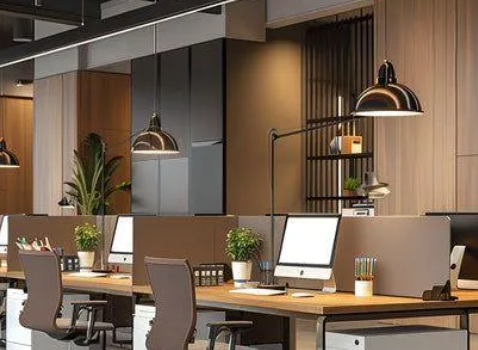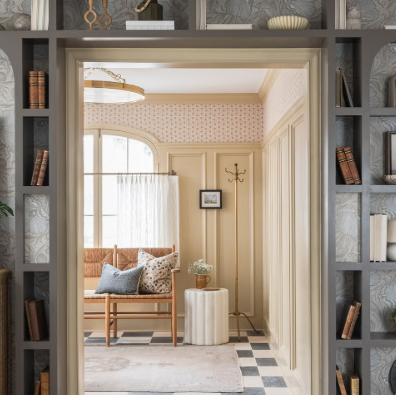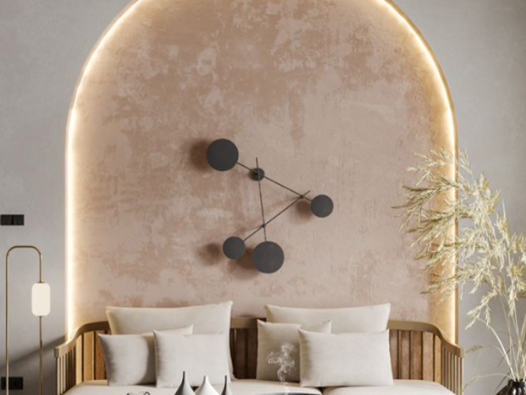
In today’s fast-paced work environment, the design of your office space plays a crucial role in driving productivity, creativity, and overall employee well-being. While many focus solely on aesthetics, office interior design goes beyond looks, combining ergonomics, functionality, and brand identity to create an efficient workspace. To help guide you through the process, here’s an office design checklist to ensure every aspect of your office is carefully considered.
10 Key Steps for a Well-Designed Office Space
- Define Each Area’s Purpose
The first step in designing your office is understanding the function of each area. Do you need breakout zones for brainstorming? Or quiet rooms for focused work? Creating distinct spaces for specific purposes can enhance productivity and encourage collaboration. - Measure and Plan the Space
Start with the layout. Measure your office space carefully to determine the best furniture and layout options. Good space planning ensures a natural flow, reduces obstructions, and makes the most of every inch while keeping the office functional. - Maximize Lighting
Lighting has a huge impact on the ambiance and productivity of your office. While natural light is always a plus, make sure to layer your lighting with ambient lights for general illumination, task lighting for focused work, and accent lighting to highlight key design elements. - Invest in Ergonomic Furniture
The importance of ergonomics cannot be overstated. Choose adjustable desks and chairs that provide comfort and support. Consider storage solutions that keep your office organized and minimize clutter for a more efficient workspace. - Set Up the Right Technology
Ensure your office is equipped with the latest technology, from computers to cable management systems. Think about additional needs like power outlets and Wi-Fi extenders to keep the space running smoothly. - Showcase Your Brand
Your office should reflect your brand’s values and identity. Use colors, artwork, and design elements that align with your brand’s ethos. This helps create a cohesive and inspiring environment for both employees and visitors. - Prioritize Flexibility
Offices need to adapt to different tasks and team sizes. Invest in modular furniture that can be easily rearranged. A flexible workspace allows you to adjust to changing needs and fosters a collaborative and versatile environment. - Consider Acoustic Needs
Noise can be a significant distraction in an office. Consider acoustic treatments such as soundproofing panels, carpets, or strategic placement of plants to absorb sound. Designating quiet zones can also help employees find peaceful spaces when needed. - Support Employee Well-being
Beyond workstations, your office should provide spaces for relaxation and recharging. Breakout areas, casual lounges, or even recreational rooms can help employees de-stress and foster a sense of community. - Embrace Sustainability
Sustainable design choices are becoming increasingly important. Opt for energy-efficient lighting, sustainable materials, and eco-friendly furniture to reduce your office’s environmental footprint and reinforce your company’s commitment to sustainability.
Achieving Balance with Your Office Design Checklist
Designing a functional and aesthetically pleasing office doesn’t need to be overwhelming. Using an office design checklist can help you stay organized and ensure every aspect is covered. Whether you’re revamping an existing office or setting up a new space, this checklist will guide you through creating a balanced and functional environment.
Office Design Checklist
- Initial Assessment
- Define each space’s purpose
- Measure and plan according to available space
- Lighting & Atmosphere
- Incorporate natural and artificial lighting
- Consider acoustic solutions for noise control
- Furniture & Ergonomics
- Prioritize ergonomic furniture
- Ensure essential tech infrastructure
- Branding & Aesthetics
- Align the design with your brand
- Use inspiring art and decor
- Flexibility & Future Growth
- Choose modular, adaptable furniture
- Plan for future expansions or restructuring
- Employee Well-being & Recreation
- Create spaces for relaxation and de-stressing
- Include recreational areas for team-building and brainstorming
- Sustainability & Environment
- Opt for eco-friendly fixtures and materials
- Integrate green spaces with indoor plants
- Collaboration & Meeting Areas
- Designate spaces for meetings of various sizes
- Encourage open collaboration zones for spontaneous ideas
- Safety & Security
- Ensure proper safety protocols are in place
- Install security measures for data protection and access control
- Storage & Organization
- Implement smart storage solutions
- Regularly declutter and organize workspaces
Conclusion
With thoughtful planning and attention to detail, the right office design can transform any workspace into a productive, welcoming environment. From incorporating ergonomic furniture to designing flexible, branded spaces, the key to creating a great office is balancing aesthetics, functionality, and employee well-being. Whether you’re refreshing your current office or planning a new layout, this checklist will help guide you every step of the way toward creating a space that fosters creativity, collaboration, and comfort.










